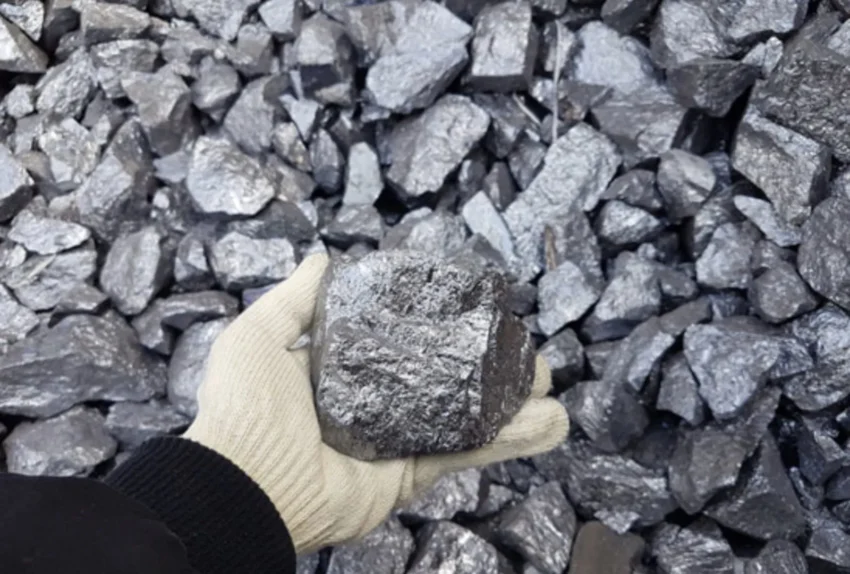The classification of rare earth elements into “light” and “heavy” groups is based on their atomic weight. The heavy rare earth elements, or HREEs, include Dysprosium, Erbium, Holmium, Lutetium, Terbium, Thulium, Ytterbium, and Yttrium.
For more information, check out the light rare earth elements (LREEs) as a group and all rare earth elements (REEs). Be sure to check out all other critical raw materials (CRMs), as well.
Interesting Facts About The Heavy Rare Earth Elements As A Group
- HREEs have smaller ionic radii than light rare earth elements (LREEs) due to the lanthanide contraction phenomenon, where the 4f electron shell doesn’t shield the nuclear charge effectively, causing atoms to shrink progressively across the series.
- The distinction between light and heavy rare earths is based on electron filling patterns: HREEs have more than half-filled 4f orbitals (except for gadolinium which sits at the boundary with exactly half-filled 4f orbitals).
- HREEs form stronger bonds with oxygen compared to LREEs, making them preferentially concentrated in certain minerals like xenotime (YPO₄) rather than bastnäsite or monazite where LREEs dominate.
- All HREEs exhibit higher thermal neutron absorption cross-sections than LREEs, with gadolinium having one of the highest neutron absorption cross-sections of any element, making it valuable for nuclear reactor control rods.
- The magnetic moments of HREE ions generally decrease across the series due to increasing numbers of paired electrons in the 4f orbitals, contrasting with the irregular pattern seen in LREEs.
- HREEs have higher melting points than their LREE counterparts, with lutetium having the highest melting point (1663°C) among all lanthanides.
- In geological processes, HREEs are less mobile than LREEs during weathering and alteration because they form more stable complexes with carbonate and phosphate ligands.
- The crystal field splitting energies for HREEs are larger than for LREEs, resulting in more pronounced effects on their electronic spectra and magnetic properties.
- HREEs preferentially partition into garnet during igneous crystallization, while LREEs favor clinopyroxene, creating distinct signatures used in petrogenetic studies.
- The abundance of HREEs in Earth’s crust follows an odd-even pattern (Oddo-Harkins rule) where even-numbered elements are more abundant than odd-numbered neighbors, but overall they’re 100-1000 times less abundant than LREEs.
- HREEs have smaller coordination numbers in aqueous solutions (typically 8) compared to LREEs (typically 9), affecting their behavior in hydrothermal systems and extraction processes.
- The magnetic anisotropy of HREEs is generally stronger than LREEs, making dysprosium and terbium particularly valuable for permanent magnet applications requiring high coercivity.
- HREEs show more covalent character in their bonding compared to LREEs due to better 4f-5d orbital mixing, influencing their coordination chemistry and complex stability.
- In ion exchange chromatography, HREEs elute before LREEs because they form weaker complexes with most chelating agents, a property exploited in industrial separation processes.
- The luminescence quantum yields of HREE complexes are generally lower than LREE complexes because of increased non-radiative decay pathways from closely spaced electronic energy levels.
- HREEs concentrate in Earth’s continental crust relative to the mantle more than LREEs do, suggesting different behavior during planetary differentiation processes.
- The hydration enthalpies of HREE ions are more negative than those of LREEs, reflecting stronger interactions with water molecules due to their higher charge density.
- HREEs exhibit stronger spin-orbit coupling than LREEs because of their heavier atomic masses, significantly affecting their spectroscopic and magnetic properties.
- In biological systems, HREEs show higher toxicity than LREEs, possibly due to their stronger binding to calcium-binding sites in proteins, though all rare earths have relatively low bioavailability.
- HREEs exhibit significantly higher prices and market volatility than LREEs, with dysprosium and terbium often trading at 10-50 times the price of cerium or lanthanum, primarily because their deposits are geographically concentrated in southern China’s ion-adsorption clays, creating a near-monopoly that affects global supply chains for technologies like wind turbines and electric vehicles.
Thanks for reading!
